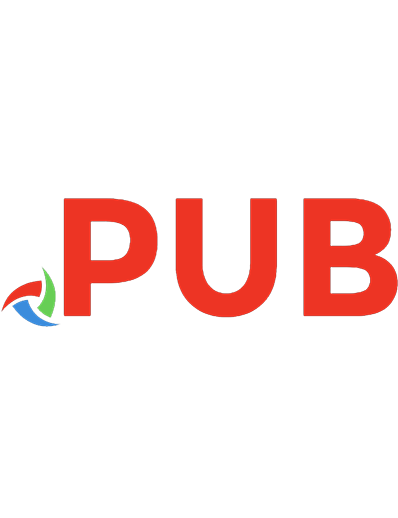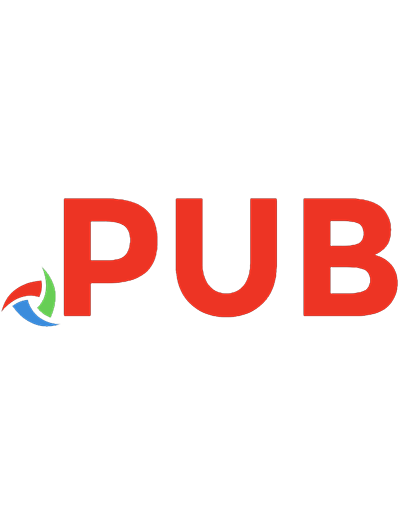The change in the European balance of power, 1938-1939 : the path to ruin 9780691054131, 0691054134
The origins of this study lie in the spring of 1970 when, in a research seminar, I undertook to study the military aspec
330 29 30MB
English Pages 494 [524] Year 1984
Polecaj historie
Table of contents :
Contents
List of Maps xi List of Charts xiii List of Tables xv Acknowledgments xvii Introduction xix
I Germany: The Strategic Problem 3
II Britain 50
III The Rest of Europe 93
IV The Line of Departure: European Background to the Anschluss 129
V From Austria to Czechoslovakia 155
VI Munich: The Diplomatic Crisis 195
VII Munich: The Military Confrontation 217
VIII The Aftermath of Munich 264
IX The Reaction to Prague: Diplomatic Prelude 283
X Grand Strategy and the War's Beginning 310
XI Conclusion 354
Abbreviations 371
Notes 373
Bibliographical Essay 458
Index 479
Citation preview
HARVARD COLLEGE
LAMONT LIBRARY
»
1^
/ ■ft
»
>T
■i ' H
'4
t.
•iV
I
'T
I »
1
J'‘ "
“•• 7
'
t
i ;■ I, >■
/ *
‘X
Digitized by the Internet Archive in 2018 with funding from Kahle/Austin Foundation
https://archive.0rg/detaiis/changeineuropeanOOOOmurr
The Change in the European Balance of Power 1938-1939
WILLIAMSON MURRAY
The Change in the European Balance of Power 1938-1939 The Path to Ruin
PRINCETON UNIVERSITY PRESS PRINCETON, NEW JERSEY
121
mi 11'?! X
3 ■75^'i5-
Copyright © 1984 by Princeton University Press Published by Princeton University Press, 41 William Street, Princeton, New Jersey 08540 In the United Kingdom: Princeton University Press, Guildford, Surrey All Rights Reserved Library of Congress Cataloging in Publication Data will be found on the last printed page of this book ISBN 0-691-05413-4 / 0-691-10161-2 (pbk.) This book has been composed in Linotron Electra Maps and charts by Lisa T. Davis
Clothbound editions of Princeton University Press books are printed on acid-free paper, and binding materials are chosen for strength and durability. Paperbacks, although satisfactory for personal collections, are not usually suitable for library rebinding Printed in the United States of America by Princeton University Press Princeton, New Jersey
To the Memory of My Friends Georg Heiner Sell, Robert Miller and Helen Smith
V,
9
Jr. .. *•
s
f
.'.;',-5^'^ 7»7i \. '
or
i '\-
;
=!•»
e. .^.-
9
a
r4lli
m
i.., ■•■p '.•.
■ii^.
If you do not intervene, you will remain the prey of the victor without dignity and without favor. It will always be the case that the party which is unfriendly to you will seek your neutrality, while your friends will demand that you declare yourself by taking up arms. Princes who lack resolution take the path of neutralization in order to avoid a present danger and for the most part find it the path to ruin.
Machiavelli, The Prince
TPf
ItWViiafV
Ha'
,yi\
-I J'.'jj
V^i*
V‘
fi'" \si '(;3». .,»r'*•
'i.-tS’f ’i\uVii
^ ■ vl’JX’,'>Ti'. V
l>
l•*•:^ur•rt
. .r'
'h[\
1
.. \v.;
V V-'W- M -ii'i
\
nnu
)
'VuH'li' '4T 4
.’ AV^
S^H^I ^ ••
' • *-^v- >.*■
•'%.
** .1
T f;
' < •. ..Ij ■• .-. - ' -v
!I0
^ J
#■
iE
»
‘X M.' M..
Contents
List of Maps
xi
List of Charts
xiii
List of Tables
xv
Acknowledgments Introduction I II
xvii
xix
Germany: The Strategic Problem Britain
3
50
III
The Rest of Europe
93
IV
The Line of Departure: European Background to the Anschluss 129
V
From Austria to Czechoslovakia
155
VI
Munich: The Diplomatic Crisis
195
VII VIII IX X XI
Munich: The Military Confrontation The Aftermath of Munich
217
264
The Reaction to Prague: Diplomatic Prelude Grand Strategy and the War's Beginning Conclusion
354
310
283
Contents
Abbreviations Notes
371
373
Bibliographical Essay Index
479
X
458
Maps
I II
Europe
in
1937
130
The German Invasion of Austria
III
The Munich Agreement
IV
Czech Fortifications
V VI VII VIII IX X XI
The Haider Plan Hitler's Plan
146
216
224
227
228
Final 'Tall Griin" Plan
230
Czech Dispositions, September 29, 1938 The Invasion of Poland
232
325
German Proposed Offensive (Fall 1939)
333
German Dispositions on the Western Front (September 1939) 349
XI
t
ix
J -^iQi m xnv3a.;i % ,
1
■ |5^* •SljTW^ , • ,* '^r ‘ • V M n i ^/ '>lfl*
♦
(
i
? U< li ’(ta. Vfl i} 'r. -
1'
2*
iisK •* ;i^-! •’.}'! tiffr
ttr n 1 < ’
, ia4'i *•#.** '■ f U
(
i
T 13 ?
'T k) Ub»1"
?hV ;'^' yff ■3
.'■-
> I toll uw.??^.7 ff iiitrfi%f
iX
I
4
S' -
i
Charts
1
Percentages of 1938 World Output of Certain Raw Materials 5
2
Percentages of 1938 World Output of Certain Raw Materials 6
3
German Imports and Internal Production of Petroleum, 1928-1937
7
4
Iron Ore Supplies for the German Economy, 1936-1944
5
1938: Sources of German Iron Ore
6
1938: Production of Nickel and Copper, War Economy Requirements and Sources 11
7
German Gunpowder Production, 1936-1940
8
German Production of Explosives, 1936-1940
9
Imports of Raw Materials, 1938=100
10
25 26
327
10
Tonnage of German Imports and Exports, 1939-1940
11
Value of German Exports and Imports, 1939-1940, in million RM 329
12
Petroleum Stockpiles in Millions of Tons
Xlll
9
330
328
'
'i,
Ai-
’.V
Mo
• •/H flikt
■ ■ ■V'ii"' '
V .‘"V.;.
'
i; ■*'■
•
..r"
• :
s.
4t
O ■>■ 4 > ^* f
i' ;i' fe •■V ■
if -4•O - ,rT,i
,iu’;:Tj
i'
«p»
\
■■■
vti^irtuT
•■ r
/
M
Tables
i- i
German Trade and Foreign-Exehange Balanees, 19301937
14
1-2
German Industrial Produetion, 1925-1928 and 19321936 18
1-3
Investment in Gapital and Gonsumer Industry, 19281939
18
1-4
Industrial Employment in Germany, 1929-1939
19
1-5
Military Expenditures of Major European Powers, 19351938 20
ii- i
British Balanee of Payments, 1933-1938
11-2
British Balanee of Trade, 1929-1938
11-3
Gold and Gonvertible Gurrent Reserves in Britain, 19311938
53
54
iii-i
German Aireraft Losses, May-June 1940
111-2
Russian Mobilization Strength
v-i
53
107
124
1938 Freneh Estimate of German Strength for 1939
VII-1
British Anti-Aireraft Guns, Eall 1938
vii-2
German Airerew State of Readiness, August 1938
VII-3
Luftwaffe '4n Gommission’' Rates
x-i
Swedish Ore Exports
331
XV
250
165
248 249
' IJ .
1
‘5
, I-f
,:i *J V I
•.
If III?
0
#»«? P5^
»; ' ■ , Jb
■ .'V‘i, !• 9
), t.'‘W
III
'*1
I
» * •»|f u^'
- ■*)
i
I
I
'.'
'•«
P^TTT'
f-) !•
‘
r.i^ ri.
-1\
1 M ^
’-t
‘r,. t
. . .;■• >4
j.^it.
:’if 1
fi'.r-/
i
- >1
h.M*. »
tf.rfjt
'\'
’ i’ ' . -L .'
'. .
M
•
>'
.,,
’
•■t
»
£ U
» I H ..(-Ml
4.^
’
'I
ii{‘ j
IP .?;■
..
••(
j-in
•:■
r'*'.
ji
I 8fp.
«
»*
.itfin'iO - t-V. 4 pit* vr
rfj.','
4
,..t!i -H
ii i -i*) i
mi
f
Acknowledgmen ts
This manuscript is the outgrowth of both the research that led to my dissertation and thought given over the considerable period of time since to the strategic processes of the late 1930s. During that time the adviee and encouragement of my advisor, Hans Gatzke, was critical in providing the criteria and sense of what historical research involved. At Yale, Professors Donald Kagan and Piotr Wandycz gave me direc¬ tion, encouragement, and sensible clear-headed advice. My debt to my days in graduate school would not be complete without mention of the contributions that my friend and fellow student MacGregor Knox made to my understanding of military affairs. In the preparation of the various drafts that this work has gone through, my wife, Marjorie Murray, Mark Biddle, Albert Macehioni, Nieholas Rostow, Kent Mitchell, and Brad Meyer have all made significant eontributions. Here at Ohio State I owe a considerable debt of gratitude to the late Andreas Dorpalen and to my present colleague Allan Millett. Richard Ghallener and Richard Ullam, of Princeton University, provided enor¬ mously helpful critiques of the several drafts of the manuscript that I submitted to the Princeton University Press. At West Point Helen Bowman, Bob Doughty, and Paul Miles all provided signifieant sup¬ port with the final proofs. In Europe Brian Bond, of the War Studies Department, King's Gollege, London, and Wilhelm Deist, of the Militargeschichtliches Forschungsamt, provided critical, perceptive help. I must also thank my editors at Princeton, Miriam Brokaw and Marilyn Gampbell for their help in preparing the final manuscript. Lisa Tingey Davis did an outstanding job with the maps and charts. Finally I should also mention the help that I have received from the various archives that I have visited. George Wagner, of the Gap-
xvii
Acknowledgments
tured Records Section of the National Archives, was always helpful and friendly. In Great Britain and Germany 'TaG MacDonald, of the Air Historical Branch, the staff of the Public Record Office, and the archivists at the Militararchiv in Freiburg played an important role in guiding me through the maze of documents dealing with the late 1930s. Joni Wood-Ward did an outstanding job with the typing of the final manuscripts. As with all works of this nature the strengths more often than not reflect the help of others: The weaknesses, however, are mine alone.
xvin
Introduction
The origins of this study lie in the spring of 1970 when, in a researeh seminar, I undertook to study the military aspeets of the Czeeh erisis of 1938. As I beeame familiar with the period, I eame to feel that, although the 1938 crisis was of great importance in delineating the shift in the European balance of power, it formed only a part of a larger picture. To understand the historical process, the entire period from March 1938 through to the winter of 1939-1940 must be seen as a whole. This study aims to achieve such an understanding. It looks at the strategic, economic, and military situations over the period and then considers them in relation to the actual course of events. It attempts to clarify not only the real strategic positions but the differing percep¬ tions of them by military leaders and statesmen. Above all, this study tries to describe the impact of military and strategic factors in peace as well as in war. Only by discussing the processes through which policy evolved, by considering the misperceptions and miscalculations that guided policy ^ makers, and by comparing their views with the actual strategic situation can one understand what went wrong in the late thirties. As in any era, politicians and military leaders faced immense difficulties in the formation of policy. What in retrospect may seem clear and obvious was not necessarily so at the time. For nearly all the strategic missteps there were seemingly good and logical reasons for taking what in retrospect was the wrong course. Yet, in the final analysis. Hitler more often than not made correct strategic decisions, while the Allied leaders did not. That difference alone suggests that something was indeed ^ wrong with the response of the Western Powers to the crisis occasioned by the rise of Nazi Germany.
XIX
i •• " 1
y
^■^, Ji't
-#y
s- v'£!?i^i| .: jr-t:*! Km , ' 3in;i ci
. r.ifii= '
rr
I »
,'>ir,*}. .-; '* f *i(i ii j ■* •«! ) ,.*
■ .
'
^^ivd}^tf4U tffb
hiv*c XV
*r^^i,j
•■. >S ;’
Icm
. «'■
.1!'
'^i
• ;::=^:; '
.
\ \l 'A
‘f i\
^ri Z'M
,d
The Change in the European Balance of Power 1938-1939
V % s
«
c r
‘
'
T'
'r
X
If) 330KI‘H
it
cV:
I
Germany: The Strategic Problem
On January 30, 1933 Adolf Hitler assumed the ehaneellorship of Ger¬ many. Within five days he made elear to the state’s military leaders that his diplomatie and strategie aims involved not merely ehanges within the framework of the Versailles treaty but the wholesale destruetion of that treaty as well as of the existing balanee of power in Europe. ^ As he had eonsistently enuneiated throughout his eareer, his purpose was not to make war for the sake of minor alterations but to destroy the European system and to aequire the Lebensraum needed by the German people. ^ It seems likely that Hitler’s military listeners paid relatively little attention to the fiihrer’s dreams of vast conquests; they were undoubtedly happy enough to hear that they now possessed a government that would unshackle the hated restrictions of Versailles and allow Germany’s military forces to regain their proper place in the sun. The course of German history over the next six and one-half years would be intimately connected with the process of rearmament and preparations, at least in Hitler’s mind, for ''der Tag.” Yet rearmament would not be an easy task. Economic and strategic factors influenced its course and placed limitations on the German government that proved exceedingly difficult to overcome—particularly in the period immediately before the outbreak of war. The Germans faced problems in their rearmament effort in terms of foreign exchange, availability of resources, and overall national strategy that were entirely different in nature from those faced by the Anglo-Saxon powers or the Soviet Union. 5 It is only through an understanding of the interrelations among ^ those economic difficulties, the strategic deficiencies, and Germany’s diplomatic and rearmament policies that one can come to a full un-
3
Germany: The Strategic Problem derstanding of Germany’s strengths as well as her very eonsiderable weaknesses at the end of the 1930s. The ability of the Germans to overeome, or at least eseape, the full implications of their economic and strategic difficulties in the first year of the Second World War (although only just barely) would play a decisive role in the catastrophes of the 1939-1941 period.
The Nature of the Strategic Problem: The German Economy In the last years of the First World War, the naval blockade in the North Sea had exercised an increasing, and in the final analysis perhaps decisive, effect on the strategic position of the Gentral Powers. By summer 1918 the specter of starvation stalked not only the populations of Austria-Hungary and the other allies of Germany but also the Ger¬ mans themselves. Moreover, the privations of the previous three years of blockade directly affected military operations. For the great spring offensive of 1918 the German high command could barely scratch together forty first-class divisions, and the remainder of the German infantry had degenerated into groups of weary, ill-equipped soldiers. ^ Even the first-class attack divisions would at times become ill-disci¬ plined mobs, looting from Allied supplies the food and equipment so long denied them by the blockade. 5 Germany was as dependent economically on imported raw materials in the 1930s as she had been before the First World War. In fact, her dependence had increased. German resources of every strategic raw material except coal (see Gharts 1 and 2) were at best insufficient, and in most cases simply did not exist. Even Germany’s agricultural pro¬ duction could not meet her needs. Goal was the one raw material Germany possessed in abundance. Yet strategic and economic difficulties impinged on this sector. The western coal fields, particularly those in the Saar, lay close by the border and faced the threat of French military operations. In the east the fields of Silesia faced a similar threat from the Poles and the Gzechs. The demands of the German economy for coal were enormous. The iron and steel industries were the biggest users, but the transport net¬ work, synthetic industries, and electric power plants also depended heavily on coal. Moreover, one of the most important uses of German coal was to earn foreign exchange.^ Goal exports to Southeastern Eu-
4
Germany: The Strategic Problem Chart 1
Percentages of 1938 World Output of Certain Raw Materials ] British Empire United States Soviet Union '-p
2
O
Germany
CO
'A^'^^/l:r4s^^a■'ll?fa■dSr.4rrfft^t^MCl^,:■^^ kffi iirj^ u?':;Mii:^iyiijii( (h ’v!i;^4rk r t^r!‘
:piI .r.
..
{ffaoasfFJ^. iftbV/'
l^i+7 -vyJi-l1pit'Gdpi'3Qt »l‘KlWtlK^>l - ( jI
•tKf.n*'^r 'j*yi '"r. i[’«r^t'&i:»ir\48>64wJr;
^is
> i//:’ ‘*i- si^yU '^■C;rr} ^.t-
J^* -
H’.u^ryii '>fff ^^^ jmh .'%D
.Of '**.'W 'V />■
ljil*/>v
i'^ vu->.^J. •.^'’:;ii;;; ^i
/
-
' •
*>♦»
K'.' ■»*
r
*•
*'
• 4-
t'wKa*
''■■
« ' • 1.
^1 V-
. 5/1
t.n'tyr
tt.
’♦■'
I ^ '^
*
U ' i
4-^ *
■
,
■
1
■
"at •*«: 8
I
i ‘■■ %H
\
■i
’
\
i
i
I!
\
'
I
HAR^^ARD COLLEGE, CAMBRIDGE, MA 02138
MRR17 «88 D










